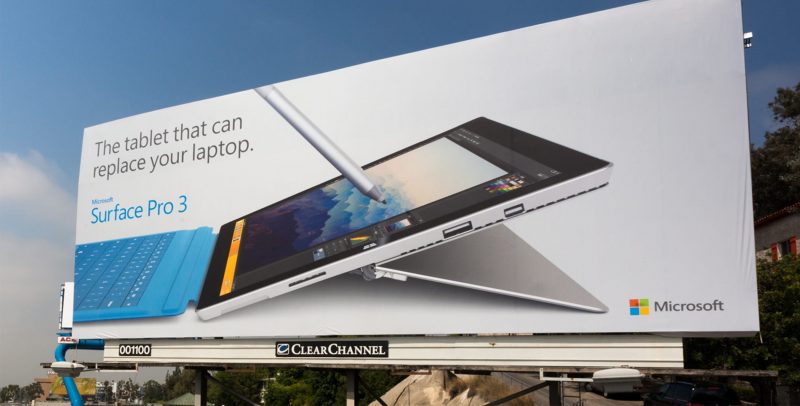Related Services
Credits
Writer: Dejan Kvrgic

The COVID-19 pandemic has brought the entire world to a screeching halt. It’s hard to think of a year of disruption, unprecedented change, and upheaval that had an enormous impact on virtually every aspect of society as anything but negative.
One sector that appears to have been particularly affected is OOH advertising; the out-of-home industry was left on the shelf. However, 2020 turned out to be an unexpected lesson in adaptation and patience for marketers and advertisers, too.
And as the world adjusts to the “new normal” and the profound changes across industries, we’d like to take this opportunity to reimagine OOH in a post-COVID world.
So, what’s the future of print OOH post-lockdown?
How Has COVID-19 Impacted Out-Of-Home Advertising?
COVID-19 reshaped business and consumer behavior in a massive, fundamental way. And while the advertising industry as a whole felt the effects, print OOH seems to have suffered the most.
Gathering in large crowds became dangerous. People started working remotely. Travel was out of the question. Sporting events got canceled. And many government officials recommended staying at home whenever possible.
With social distancing as the new norm, impacting traffic and mobility, the out-of-home (OOH) advertising market was at a standstill. Moreover, market uncertainty and the economic crisis caused by the pandemic have only complicated the future of OOH advertising further.
Ad spend experienced a significant drop overall. The OOH industry barely grew, and the revenue plummeted by 45% in the second quarter of 2020. Brands were hesitant to allocate their resources to outdoor advertising.
After all, with stay-at-home orders in full effect, who would you be advertising to when the public is – well, not in public?
The way that we advertise has changed irrevocably due to the pandemic; that much is clear. Some might even look at the OOH industry as one more COVID-19 casualty that needs to be left behind. But there is a future for this medium as it evolves from what it is today.
It would be silly to assume that, as the lockdown lifts, the industry can pick up where it left off or that pre-pandemic trends could still hold up today. The shift was too major to allow for a smooth, flip-of-a-switch transition into the post-lockdown world. As lockdown lifts, state by state, people will be heading outside more than ever.
For businesses that dare to use creativity, focus on hyper-local geo-location targeting, and shift their budgets from national to regional and local, the OOH opportunity will be one that’s ripe with possibilities. And 2020 might just go down in history as the year that transformed the out-of-home advertising industry for the better.
Print OOH Is Not Dead: Why OOH Is Still A Powerful Medium
Some were quick to declare the death of print OOH, but we wouldn’t schedule its burial just yet. The power and beauty of print OOH lie not only in how enduring it can be but in the fact that it allows advertisers to “own” their space within what’s traditionally been public territory.
- Here’s a reminder of why OOH is still a powerful medium:
- It reaches audiences out of home, where it can trigger consumer behavior
- It offers an unintrusive, seamless experience
- Out-of-home ad placements are location-specific and highly targeted
- It can amplify other media channels, reaching consumers in the digital and physical worlds
- It’s a cost-effective medium for advertising
Make no mistake about it: Out-of-home advertising continued throughout the pandemic; it’s how we approach it and how we present it that’s changed.
Examples Of Successful Campaigns: Print OOH In Action
The COVID-19 pandemic is among the most devastating in human history. It might’ve been marked by lockdowns, social distancing, and an overall drop in ad spend – and it certainly was a turning point for the OOH industry. But that’s not to say that COVID-19 spelled doom for all forms of out-of-home advertising, though.
In fact, some brands have even had success with print OOH campaigns that ran following the COVID-19 lockdown.
One stand-out example is Twitter’s user-generated OOH campaign:
The social media platform turned a number of users’ tweets about COVID-19 into billboards displayed in several cities across the US. The campaign was designed to be humorous and relatable while tapping into so-called “caution fatigue” – a stress-induced state of diminishing motivation to stick to safety practices and deemphasizing the risk of contracting COVID-19.

Source: musebycl.io
It’s easy to see why it grabbed people’s attention. The billboards showed how people felt about 2020 in a series of hilarious tweets, reinforced the bond between Twitter and its users, and reminded us to do what’s right – to continue social distancing and wearing a mask.

Source: theperfectmediagroup.com
Microsoft’s Surface Pro 3 marketing campaign is another outstanding example of print and OOH in action.
Check out our case study and see how Pastilla helped introduce the newest tablet to the highly competitive global market through sophisticated design and messaging.
Print OOH In 2021 – Post COVID-19 & Beyond
As tough as it was, the COVID-19 pandemic showcased the resilience of OOH advertising and its ability to power through. It was an opportunity for the advertising industry to relearn and transform.
Maybe advertising won’t snap back to its pre-pandemic status quo, but OOH will bounce back smarter and with renewed vigor.
If you need help getting your business ready for whatever’s next, we’re here and waiting to provide you with creative solutions for OOH advertising.
Get in touch today!
